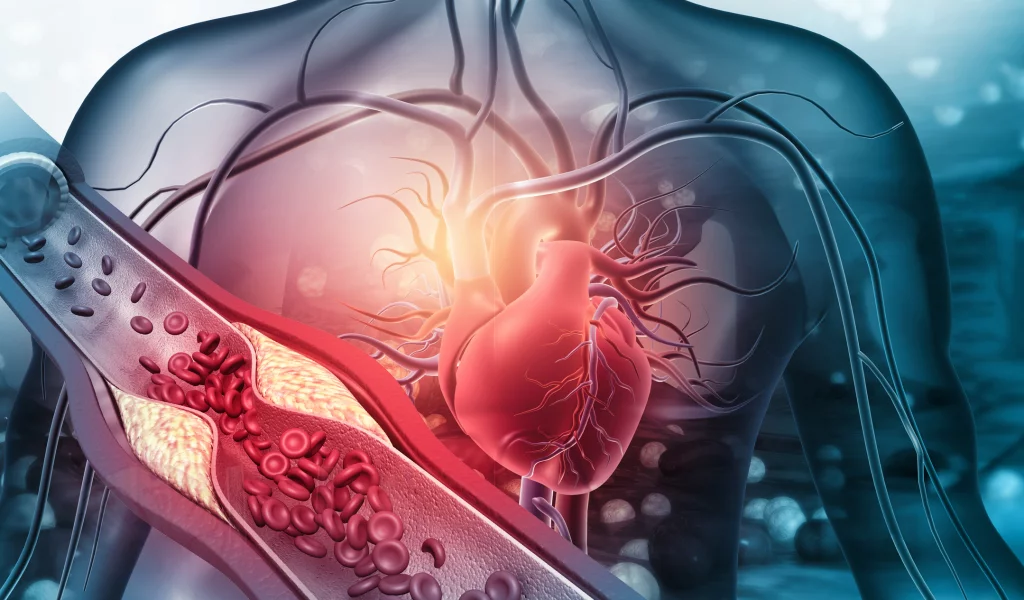
Strengthen your heart
Your heart is situated right between your lungs and how you actually breathe has a big influence on your heart. Tense, non-rhythmic and stressed breathing makes for a strained, non-rhythmic and stressed heart. Relaxed breathing, on the other hand, ensures a relaxed heart.
When we improve our breathing we also make life easier for our heart. The normal number of heartbeats at rest is 60–75 beats per minute, therefore a pulse of 70 means that our heart beats 100,000 times in a single day. The rhythm of our heart follows our respiratory rhythm. So, if the respiratory rate is high then our pulse is often high too.
The renowned Yale Professor, Yandell Henderson, who worked in heart and lung research during the first half of the 1900’s, discovered in a study on 226 patients with heart failure, that breathing and heart function followed each other; the more serious a patients’ heart failure, the more their breathing deteriorated. Roughly the following correlation can be seen:
| Breathing rate | Heart rate | |
|---|---|---|
| Stressed | 25-30 | 90-100 |
| Infant | 40-60 | 120-140 |
| High intense exercise | 40-60 | 160-200 |
| Conscious Breathing | 6-12 | 40-60 |
Carbon dioxide pressure is more important than blood pressure
We all know about blood pressure. It is measured in mmHg (millimeters of mercury) and a normal blood pressure is considered to be 110-130/80. However, carbon dioxide pressure is not as well known, mainly because it’s difficult to measure and probably also because there has been a lack of interest in breathing in the healthcare system.
An optimal carbon dioxide pressure is between 40 and 45 mmHg, and it is crucial for our well being. The carbon dioxide pressure varies with each breath and therefore provides a much better overview of our current state of health; mentally, emotionally and physically, as compared to measuring blood pressure.
| Carbon dioxide pressure | Breathing | Health status |
|---|---|---|
| 40-45 mmHg | Optimum breathing | Health, energy and harmony |
| 35-39 mmHg | Over breathing | Symptom |
| 30-34 mmHg | Hyperventilating | Diseases |
| 25-29 mmHg | Severe hyperventilation | Serious diseases |
There is a clear correlation between low levels of CO2 and the development of cardiac arrhythmia. The lack of carbon dioxide can lead to both insufficient blood flow, due to constricted blood vessels, and lack of oxygen as explained by the Bohr effect. In a study where 474 healthy subjects hyperventilated for five minutes by taking 30 breaths per minute, 15 percent showed changes in heart rhythm even after 10 minutes of rest.
It is then conceivable and logical to assume that if over-breathing only a few minutes has that effect, over-breathing, for days, weeks and years can cause the same problems on a deeper level, as was seen in the study.
Lower your blood pressure with breathing retraining
Blood pressure is the pressure exerted on the walls of our blood vessels when blood is pumped from our heart to different parts of our body and then back to our heart. Blood pressure varies throughout the day, just like breathing, and the pressure changes depending on what we do.
The connection between breathing and blood pressure is well established. In high blood pressure the breathing is fast and shallow. A normal breathing volume at rest it about three to six liters per minute. Several studies show that the breathing volume per minute is twice as high or even higher, 12–15 liters per minute, in those suffering from heart problems.
In high blood pressure and other cardiovascular problems the blood vessels are often narrow. One major reason is low levels of carbon dioxide, which causes the smooth muscles of your blood vessels to constrict. The lower carbon dioxide pressure occurs when we over breathe, since we then exhale too much carbon dioxide.
By slowing down our breathing and apply the seven good habits of conscious breathing, we can increase the carbon dioxide pressure and thereby lower the blood pressure.
Optimum carbon dioxide levels makes the blood flow more easily
Carbon dioxide deficiency caused by over-breathing can accelerate the formation of blood clots because it increases levels of platelets (thrombocytes). Blood platelets are normally formed when the blood coagulates and the increased levels of blood platelets make the blood thicker and slow-flowing (increased viscosity). During surgery there is an increased risk of the blood platelets clumping together to form clots. In a review of 48 studies, a group of researchers found that the number of blood clots is greatly reduced if appropriate techniques for adding carbon dioxide are used during heart surgery.
HRV is a way to measure the heart’s ability to adapt
There’s a clear link between a heart with poor adaptability and a stressed breathing pattern. When we inhale, our heart beats faster (our pulse rate increases), and when we exhale our heart beats slower (our pulse rate drops).
Your heart’s ability to adapt to active and restful states is called Heart Rate Variability (HRV), and the better your heart functions, the greater the variability between activity and inactivity.
A stressed heart possesses very little variability, which means that the pulse is basically the same all the time. The heart then lacks the ability to exert extra force and pump faster when needed, or relax and recover when it should do.
One way to increase your heart’s capacity is to extend exhalation, which increases your heart’s rest phase. When you extend your exhalations while maintaining a relaxed breathing pattern, your parasympathetic activity increases and you calm down. It also leads to your HRV being increased, and your heart’s ability to be active or restful at the right time increases. Plus, as you lower your internal stress, your pulse usually drops.




